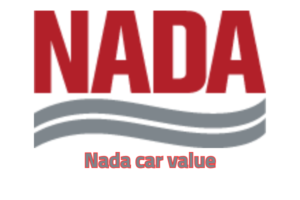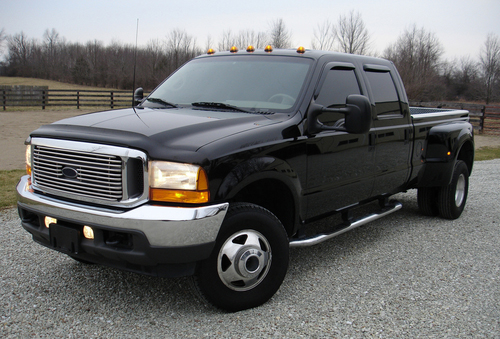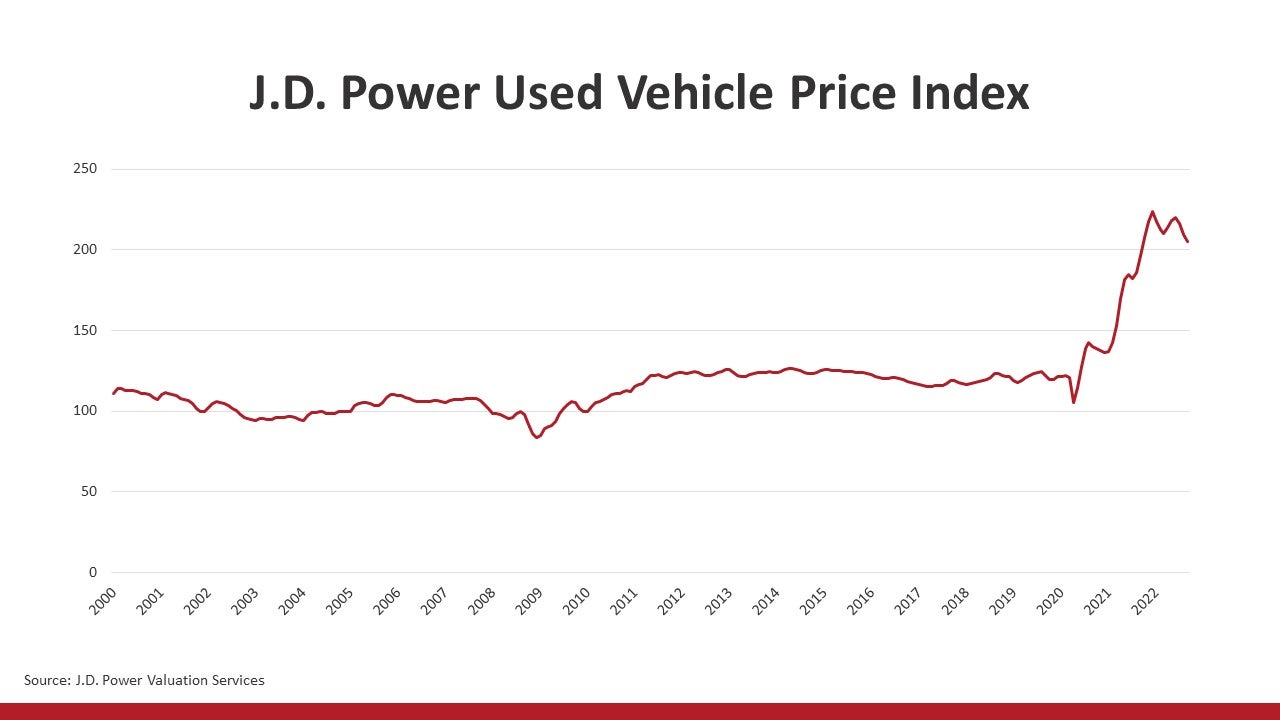Nada Semi Truck Value: Your Comprehensive Guide to Accurate Valuation typestruckssale.com
In the high-stakes world of commercial trucking, understanding the true value of a semi-truck is not just helpful—it’s essential. Whether you’re a prospective buyer looking to make a wise investment, a seller aiming to get a fair price, a lender assessing collateral, or an insurer determining coverage, an accurate valuation can save or make you significant money. This is where Nada Semi Truck Value comes into play.
NADAguides, an acronym for the National Automobile Dealers Association, has long been the gold standard for vehicle valuation across various categories, and commercial trucks are no exception. For semi-trucks, NADA provides comprehensive, data-driven insights that help stakeholders navigate the complex and often volatile used truck market. It’s more than just a number; it’s a detailed assessment influenced by a multitude of factors, offering transparency and confidence in transactions. This article will delve deep into what Nada Semi Truck Value entails, why it’s crucial, how to interpret it, and how to leverage it to your advantage.
Nada Semi Truck Value: Your Comprehensive Guide to Accurate Valuation
Understanding NADAguides: The Authority in Commercial Vehicle Valuation
NADAguides, now part of J.D. Power, is widely recognized as a leading provider of vehicle pricing and information. For decades, it has served as an indispensable resource for dealerships, financial institutions, insurance companies, and individual consumers. Its authority stems from a rigorous methodology that incorporates vast amounts of data to provide the most current and accurate valuations possible.
How NADA Derives Semi Truck Values:
NADA’s valuation process for semi-trucks is sophisticated and multi-faceted. They collect data from a wide array of sources, including:
- Wholesale and Retail Auction Data: Tracking actual sales prices at major commercial truck auctions across the country.
- Dealer Sales Data: Insights from transactions occurring at dealerships.
- Advertised Prices: Monitoring prices listed by dealers and private sellers.
- Market Trends: Analyzing economic indicators, freight demand, fuel prices, and other macroeconomic factors that influence the trucking industry.
- Manufacturer Information: Staying updated on new truck specifications, pricing, and technological advancements.
This vast pool of data is then analyzed by NADA’s team of experts who apply proprietary algorithms and models to determine a range of values for specific makes, models, and configurations of semi-trucks. The result is a highly granular valuation that accounts for the unique characteristics of each vehicle.
Key Factors Influencing Nada Semi Truck Value
The value of a semi-truck is not static; it’s a dynamic figure influenced by a host of variables. NADA’s valuation system meticulously considers these factors to provide an accurate representation of market worth. Understanding these elements is crucial for anyone engaging with semi-truck values.
- Make, Model, and Year: Certain brands (e.g., Peterbilt, Kenworth, Freightliner, Volvo, International, Mack) hold different resale values. Newer models generally command higher prices due to updated technology, better fuel efficiency, and lower mileage.
- Mileage: This is perhaps the single most significant factor for used semi-trucks. Commercial trucks accumulate miles rapidly, and higher mileage typically translates to lower value due to increased wear and tear and anticipated maintenance.
- Engine Type and Horsepower: The engine is the heart of a semi-truck. Specific engine manufacturers (e.g., Cummins, Detroit Diesel, PACCAR, Volvo, Mack) and their specific models (e.g., Cummins X15, Detroit DD15) are highly valued. Higher horsepower engines are often preferred for heavy-duty applications and can positively impact value.
- Transmission Type: While manual transmissions were once standard, automated manual transmissions (AMTs) have become increasingly popular due to fuel efficiency and ease of operation. The type of transmission can influence desirability and value.
- Axle Configuration: Common configurations like 6×4 (tandem axle) are standard, but specialized setups like 8×4 or tri-axles for heavy haul applications can significantly affect value, often commanding a premium due to their niche utility.
- Sleeper Size/Cab Type: Day cabs (no sleeper) are typically used for local or regional hauling and generally have a lower value than sleeper cabs. Sleeper cabs vary in size (e.g., 48-inch, 72-inch, 80-inch), with larger, more amenity-rich sleepers fetching higher prices.
- Condition (Exterior, Interior, Mechanical): NADA valuations provide adjustments based on the truck’s overall condition.
- Exterior: Absence of dents, rust, good paint, well-maintained chrome.
- Interior: Cleanliness, functionality of electronics, condition of seats and dashboard.
- Mechanical: Engine health, transmission performance, tire wear, brake condition, suspension integrity. A truck with a recent in-frame overhaul will command a higher value than one needing major repairs.
- Maintenance Records: A well-documented maintenance history indicates a truck has been cared for, instilling confidence in buyers and often leading to a higher valuation.
- Geographic Location: Regional demand and economic conditions can cause slight variations in value. A truck in a booming freight corridor might fetch more than one in a depressed area.
- Market Demand & Economic Conditions: Broader economic factors, such as freight rates, fuel prices, and interest rates, significantly impact the demand for trucks and, consequently, their value. A strong economy with high freight volumes drives up truck values.
- Aftermarket Modifications/Upgrades: While some upgrades (e.g., APUs, wet kits, specific chrome packages) can add value, others that are highly specialized or purely aesthetic might not translate directly into a higher NADA value.
How to Access and Interpret Nada Semi Truck Value
Accessing NADA values for semi-trucks typically involves a subscription to their commercial truck valuation services, often utilized by dealerships, banks, and large fleet operators. However, for individual buyers or sellers, some resources might offer limited access or approximate values.
Steps to Generally Access and Interpret NADA Values:
- Identify Your Truck’s Specifics: Gather all relevant details: make, model, year, engine, transmission, axle configuration, sleeper size, and precise mileage.
- Assess Condition Accurately: Be realistic about the truck’s condition. NADA often provides adjustments for "Clean Retail," "Average Retail," and "Rough Trade-in" conditions. Overestimating condition will lead to an inflated, unrealistic value.
- Input Data into NADA System (if subscribed): Users with access to NADA’s online platform input these details. The system then generates a base value.
- Adjust for Options and Features: NADA allows for adding or deducting value based on specific options (e.g., auxiliary power units, power windows, specialized tires, premium interior packages).
- Understand Different Value Types:
- Trade-in Value: This is the lower end, representing what a dealer might offer if you trade in your truck. It accounts for the dealer’s need to recondition and resell the vehicle.
- Wholesale Value: The price a truck might fetch at an auction or from a dealer buying for inventory.
- Retail Value: The higher end, representing the price a buyer would typically pay at a dealership after the truck has been reconditioned and marketed.
- Loan Value: What a lender might consider as collateral value for financing.
- Consider Regional and Market Adjustments: While NADA provides national averages, it’s wise to research local market conditions and comparable sales to fine-tune your understanding of the truck’s value in your specific area.
Benefits of Using Nada Semi Truck Value
The widespread adoption of NADA values across the commercial trucking industry underscores its numerous benefits for all stakeholders:
- For Buyers: NADA empowers buyers with negotiation leverage. Knowing the accurate market value helps prevent overpaying and ensures you make an informed purchase.
- For Sellers: It allows sellers to set a realistic and competitive asking price, attracting serious buyers and potentially reducing the time on the market. It also helps in justifying the price to potential buyers.
- For Lenders and Financial Institutions: NADA provides a reliable basis for assessing the collateral value of a semi-truck, enabling sound lending decisions and accurate loan-to-value calculations.
- For Insurance Companies: Insurers use NADA values to determine appropriate coverage amounts, calculate premiums, and settle claims fairly in the event of a loss.
- For Fleet Managers: NADA values are crucial for asset management, tracking depreciation, planning for fleet upgrades, and making strategic decisions about buying, selling, or trading trucks.
- For Dispute Resolution: In cases of disagreement over a truck’s value (e.g., divorce settlements, estate valuations), NADA provides an objective, third-party assessment.
Challenges and Limitations of Nada Semi Truck Value
While NADA is an invaluable tool, it’s important to acknowledge its limitations and potential challenges:
- Market Volatility: The commercial truck market can be highly volatile, influenced by economic cycles, freight rates, and supply chain disruptions. While NADA updates frequently, rapid shifts can sometimes mean the published values lag slightly behind immediate market conditions.
- Highly Customized Trucks: For trucks with extensive, unique customizations or highly specialized equipment, NADA’s standard valuation might not fully capture the added value. These trucks often require specialized appraisals.
- Lack of Specific Comparables: For very rare makes, models, or configurations, there might be limited comparable sales data, making precise NADA valuation more challenging.
- Subjectivity in Condition Assessment: While NADA provides guidelines, assessing a truck’s "good," "fair," or "excellent" condition can still be subjective and open to interpretation. Discrepancies can arise if parties disagree on this assessment.
- Regional Market Differences: While NADA aims for national averages, localized demand surges or drops, or specific regional preferences, might not be fully reflected in the base NADA value.
Tips for Maximizing Your Semi Truck’s NADA Value
If you’re planning to sell your semi-truck, taking proactive steps can significantly enhance its NADA value and overall market appeal:
- Adhere to a Strict Maintenance Schedule: Regular, documented maintenance is paramount. Keep all service records, including oil changes, engine tune-ups, tire rotations, and major component replacements. This history proves the truck has been well-cared for.
- Address Cosmetic Issues: A clean, well-presented truck makes a strong first impression. Fix dents, repair paint chips, clean the interior thoroughly, and ensure all lights and gauges are working.
- Perform Necessary Repairs: Don’t defer critical repairs. Issues like worn tires, faulty brakes, or an ailing transmission will drastically reduce value. Investing in these repairs before valuation often yields a higher return.
- Keep Detailed Records: Beyond maintenance, keep records of any upgrades, modifications, or significant repairs, along with receipts. This documentation supports the truck’s overall value proposition.
- Smart Upgrades: While not all upgrades increase NADA value dollar-for-dollar, certain practical additions like APUs (Auxiliary Power Units), premium seating, or a well-maintained wet kit (if applicable to your truck type) can make your truck more desirable.
- Ensure Cleanliness: A professional detailing, inside and out, can make a significant difference in how the truck is perceived and, consequently, its appraised condition.
- Consider a Pre-Sale Inspection: A professional inspection report can provide transparency and reassure potential buyers, potentially justifying a higher price.
Illustrative NADA Semi Truck Value Factors and Their Impact
Below is a conceptual table illustrating how different factors can influence the NADA value range for various hypothetical semi-truck scenarios. Please note that these are illustrative ranges and not actual, real-time NADA values, which are dynamic and require specific inputs into NADA’s valuation system.
| Truck Type/Scenario | Year | Mileage (Approx.) | Condition (NADA Grade) | Key Features/Notes | Illustrative NADA Value Range (USD, Hypothetical) | Value Impact Summary |
|---|---|---|---|---|---|---|
| Day Cab | 2018 | 650,000 | Good (Average Retail) | Cummins X15, 13-speed Manual, Air Ride Sus. | $38,000 – $48,000 | Solid workhorse, mileage typical for age, good condition helps. |
| Sleeper Cab | 2020 | 400,000 | Excellent (Clean Retail) | Detroit DD15, Eaton AMT, 72" Double Bunk Sleeper | $75,000 – $90,000 | Lower mileage, desirable automatic transmission, premium sleeper. |
| Day Cab | 2016 | 850,000 | Fair (Rough Trade-in) | PACCAR MX-13, 10-speed Manual, some cosmetic issues | $25,000 – $35,000 | High mileage, fair condition, indicating potential upcoming repairs. |
| Specialized (Heavy Haul) | 2019 | 300,000 | Very Good (Clean Retail) | Caterpillar C15 (rebuilt), 18-speed, Triple Axle, Wet Kit | $95,000 – $115,000 | Niche market, powerful engine, low mileage for type, added value from wet kit. |
| Sleeper Cab | 2021 | 250,000 | Excellent (Clean Retail) | Volvo D13, I-Shift, 78" Sleeper, APU | $100,000 – $125,000 | Newer model, very low mileage, highly sought-after features (APU, I-Shift). |
| Older Fleet Unit | 2014 | 950,000 | Poor (Salvage/Parts) | Older engine model, significant wear, needs major repairs | $10,000 – $20,000 | High mileage, poor condition, likely nearing end-of-life or needing extensive work. |
Frequently Asked Questions (FAQ) about Nada Semi Truck Value
Q1: Is NADA the only source for semi-truck values?
A1: While NADA is a primary and highly respected source, other valuation tools and market data providers exist (e.g., TruckPaper.com, IronPlanet, Ritchie Bros. auction results). It’s often beneficial to cross-reference NADA values with recent comparable sales data from these sources for a holistic view.
Q2: How often are NADA values updated for semi-trucks?
A2: NADA constantly monitors market data and updates its values frequently, often monthly or even more dynamically, to reflect current market conditions, economic shifts, and supply/demand changes.
Q3: Can I get a NADA value for a custom-built or highly modified truck?
A3: NADA provides base values for standard configurations and allows for adjustments for common options. However, for highly customized or unique trucks, the NADA value might serve as a starting point. A specialized appraisal might be needed to fully capture the value of bespoke modifications.
Q4: Does NADA account for regional differences in value?
A4: NADA generally provides national average values. While they incorporate data from across the country, significant localized market fluctuations might not always be fully captured. It’s always wise to complement NADA data with local market research.
Q5: What’s the difference between "trade-in" and "retail" value?
A5: The trade-in value is typically the lowest valuation, representing what a dealer would offer you for your truck, accounting for their reconditioning costs and profit margin. The retail value is the highest, reflecting what a consumer would pay for the truck from a dealer after it has been fully reconditioned and is ready for sale.
Q6: Why might my truck’s actual selling price differ from its NADA value?
A6: Several factors can cause discrepancies:
- Subjectivity of Condition: Your assessment might differ from a buyer’s.
- Negotiation Skills: Both buyer and seller’s negotiation abilities play a role.
- Urgency of Sale/Purchase: A desperate seller might accept less; a desperate buyer might pay more.
- Unlisted Features/Issues: Specific nuances of the truck not fully captured by NADA.
- Local Market Anomalies: Hyper-local demand or supply issues.
Conclusion
Understanding Nada Semi Truck Value is an indispensable skill for anyone operating within the commercial trucking ecosystem. It provides a common language and an objective benchmark for assessing the worth of these critical assets. By delving into the factors that influence valuation, knowing how to access and interpret these values, and recognizing both the benefits and limitations, you equip yourself with the knowledge to make smarter, more confident decisions. Whether you are buying your first rig, expanding your fleet, or planning to sell, leveraging Nada Semi Truck Value ensures transparency, fairness, and ultimately, a more profitable outcome in your trucking endeavors. In a market as dynamic as commercial trucking, informed valuation is not just an advantage—it’s a necessity.



